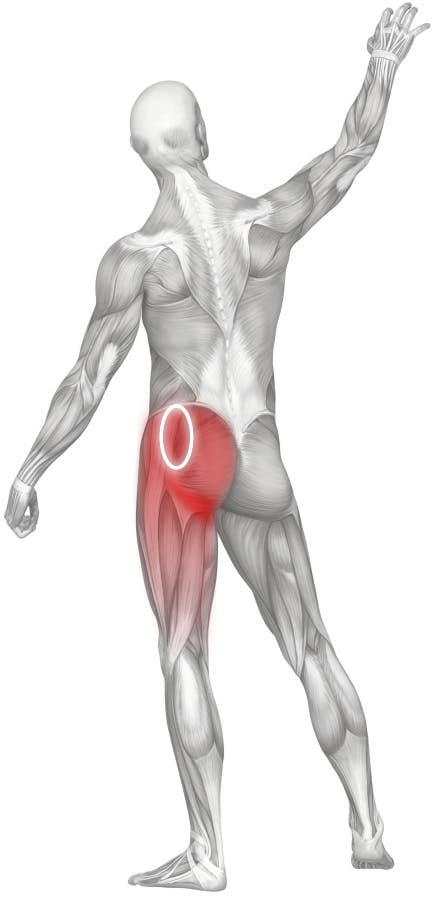By: Richard DeFalco, DPT, OCS, CSCS, CWcHP, Cert. DN
Last month I wrote an article regarding different causes of knee pain, their respective signs and symptoms, and treatment options. So in an attempt to keep things in sequence we will be moving up the kinetic chain and focusing on the hip. This article will review some of the more common forms of hip pain and various treatment interventions. It is not meant to be an all-inclusive list.

Hip pain can arise from different causative factors. Your hip pain can, in fact, becoming from the hip joint itself, such as a degeneration condition, fracture, or capsular tear; or it could be coming from a musculotendinous condition around the joint itself. Even further, it could be referred pain from a joint disorder in the lower lumbar spine, a disc herniation/disc bulge, or compression of a nerve.
A thorough physical therapy examination should be able to determine the most likely source of your pain and provide treatment options within the realm of physical therapy and provide outside referral if indicated. Physical therapy can be highly successful in the treatment of hip pain as well as other musculoskeletal conditions. The key as with any condition, is early intervention. When left untreated, symptoms progressively worsen and become resistant towards conservative treatment ultimately leading to the possibility of a more invasive procedure and/or subsequent decreased ability to tolerate activities of daily living.
Some of the common sources of dysfunction leading to hip pain that are treated in a physical therapy setting are osteoarthritis of the coxafemoral joint (hip joint), trochanteric bursitis, nerve entrapments (e.g., sciatica), tendonitis, groin pain, muscle belly strains, labral lesions, sacroiliac joint dysfunction, and referred pain from the lumbar spine. Despite the different causes of hip pain there is some overlap in the initial presentation of these disorders, such as pain with weight bearing that is felt in the groin, buttock, or inner/outer thigh. Because there is overlap, further examination by a physical therapist helps to narrow down the source of dysfunction and subsequently provide treatment options.
Communicating with your therapist regarding the nature of your symptoms is just as important as the clinical examination itself. Information provided through a patient report helps narrow down the source of the dysfunction, such as pain with standing/walking versus sitting, frequency of the symptoms, nature of the pain (sharp vs. dull), duration of the symptoms, presence of radiating symptoms, neurological symptoms (i.e., numbness and tingling), relieving factors such as medications or positional changes, and if there was a mechanism of injury.
Opting to not address your pain and pursuing the "time heals all wounds" approach can lead to a downward spiral of declining function and increasing pain. A physical therapy examination will consist of a patient interview followed by a physical examination that would include objective measurement of an individuals' range of motion, strength, joint mobility, functional movement patterns, nerve mobility, and specialized testing to rule in or out the likely source of pain. After identifying the causative factors for your hip pain, a physical therapist will develop a plan of care that may include manual "hands-on" therapy, therapeutic exercise, modalities (i.e., electrical stimulation, ultrasound, traction), and possible recommendation of braces/orthotics or other assistive devices. At Professional Rehabilitation Services, one of our Board Certified Orthopedic Physical Therapists will pursue an individualized treatment approach. So if you or someone you know has some form of hip pain or other musculoskeletal condition, seek the consultation of a physical therapist at one of our three locations or see your physician for a referral to one of our facilities.
At Professional Rehabilitation Services, we treat a wide variety of musculoskeletal conditions using the latest in evidence based therapies provided by highly credentialed physical therapists. In addition to being licensed physical therapists, our providers have additional specialty certifications in orthopedics, manual therapy, sports, and vestibular treatment. Professional Rehabilitation Services now has three locations, with the newest office located at 1301 48th Ave North, Myrtle Beach, SC. For further information on this or other related topics you can contact Richard DeFalco, DPT, OCS, CSCS, CWcHP, Cert. DN at Professional Rehabilitation Services (Myrtle Beach) (843) 839-1300, Brian P. Kinmartin, PT, DPT, MTC, OCS, STC, CWcHP, Cert. DN, (Pawleys Island) (843) 235-0200, or Richard A. Owens, PT, MS, OCS, Cert. SHT, CWcHP, Cert DN (Surfside) (843) 831-0163, or visit our website at www.prsrehabservices.com
